Abstract
The interaction between small aggregates of human IgG and the first component of human complement was studied. Stabilized soluble IgG aggregates of restricted size were prepared by heat aggregation of human IgG, followed by sucrose-density ultracentrifugation. Human C1 was isolated in its precursor form by euglobulin precipitation, followed by gel filtration and immunoadsorption. A C1 preparation was obtained of which more than 90% was still in its unactivated form. Soluble aggregates containing 20, 10 or 5 molecules IgG, and monomeric IgG were tested for their ability to bind and to activate C1. The binding of C1 was determined by C1 consumption, whereas the activation of C1 was measured as the increased ability of the C1 preparation to consume purified human C4 after the incubation with the aggregates. The three aggregates tested and monomeric IgG were all able to bind and to activate C1, but the efficiency of both processes markedly increased with increasing aggregate-size. Furthermore, it was found that all four preparations activated an appreciable amount of C1 at concentrations that did not result in any detectable C1 fixation. These results confirm earlier suggestion that C1 can be activated during a short, transient binding to small aggregates or immune complexes that have a low avidity for C1, after which the activated form, C1, is released into the medium.
Full text
PDF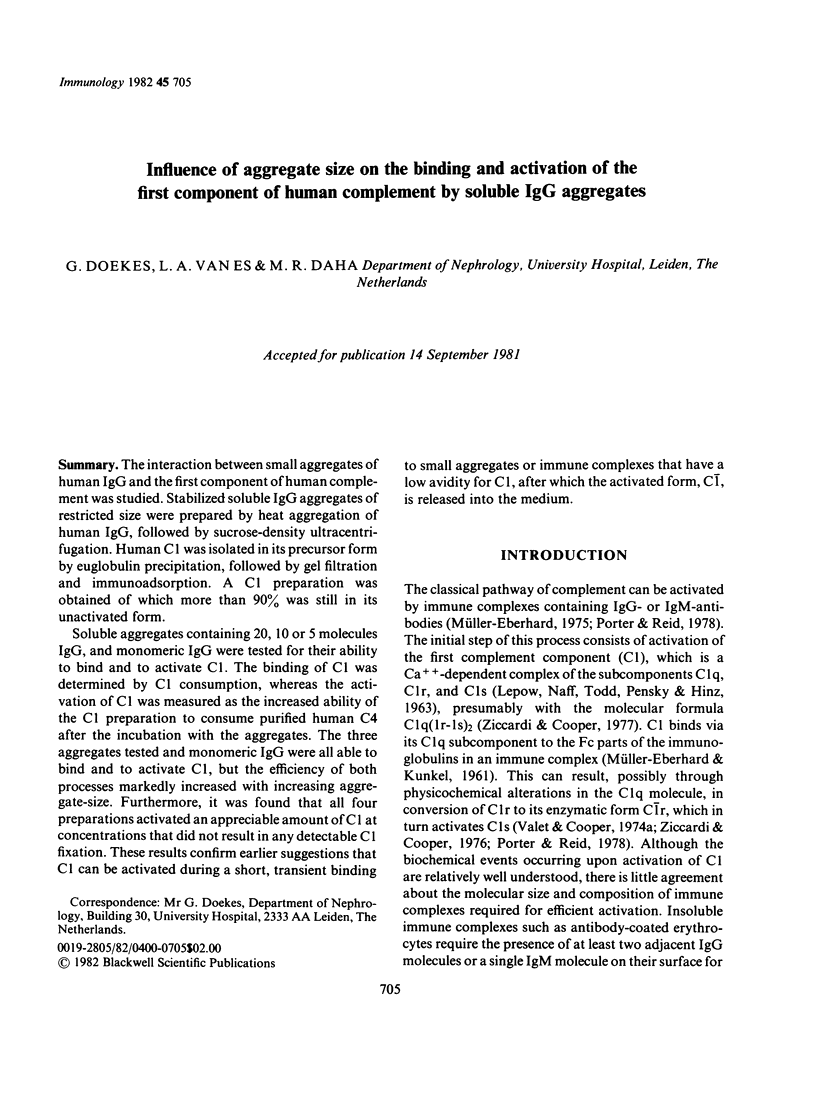
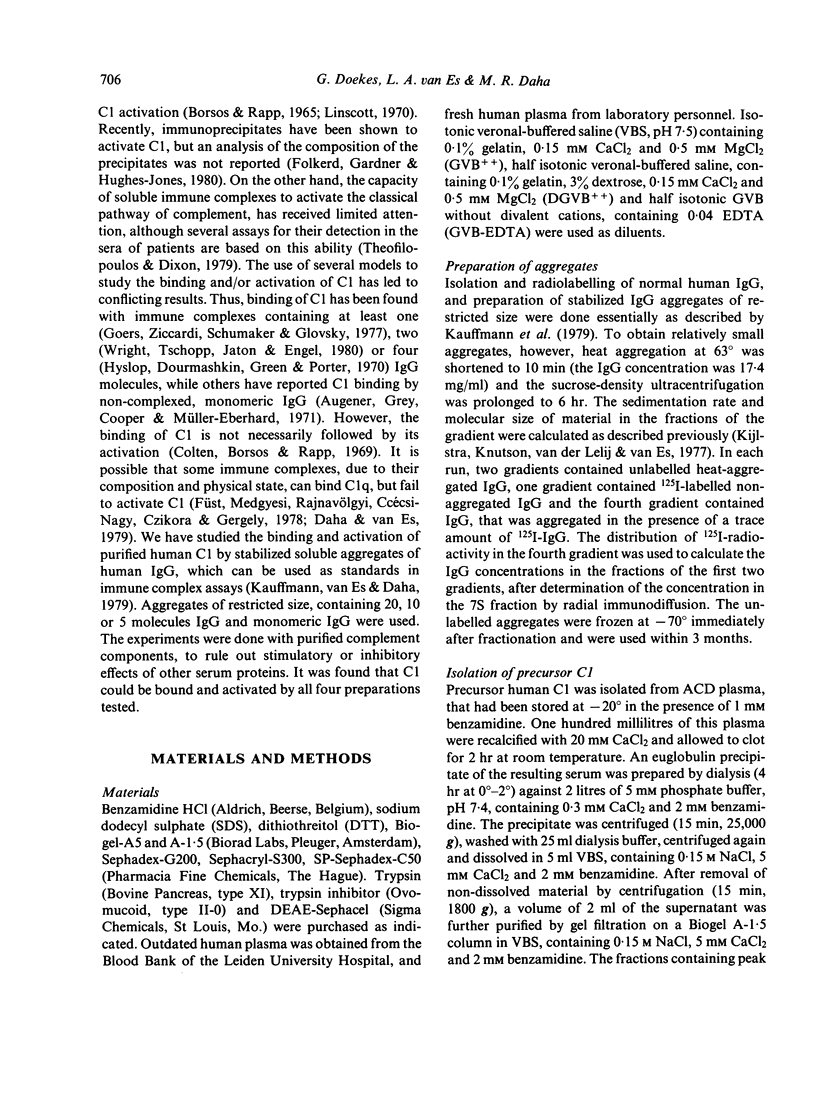
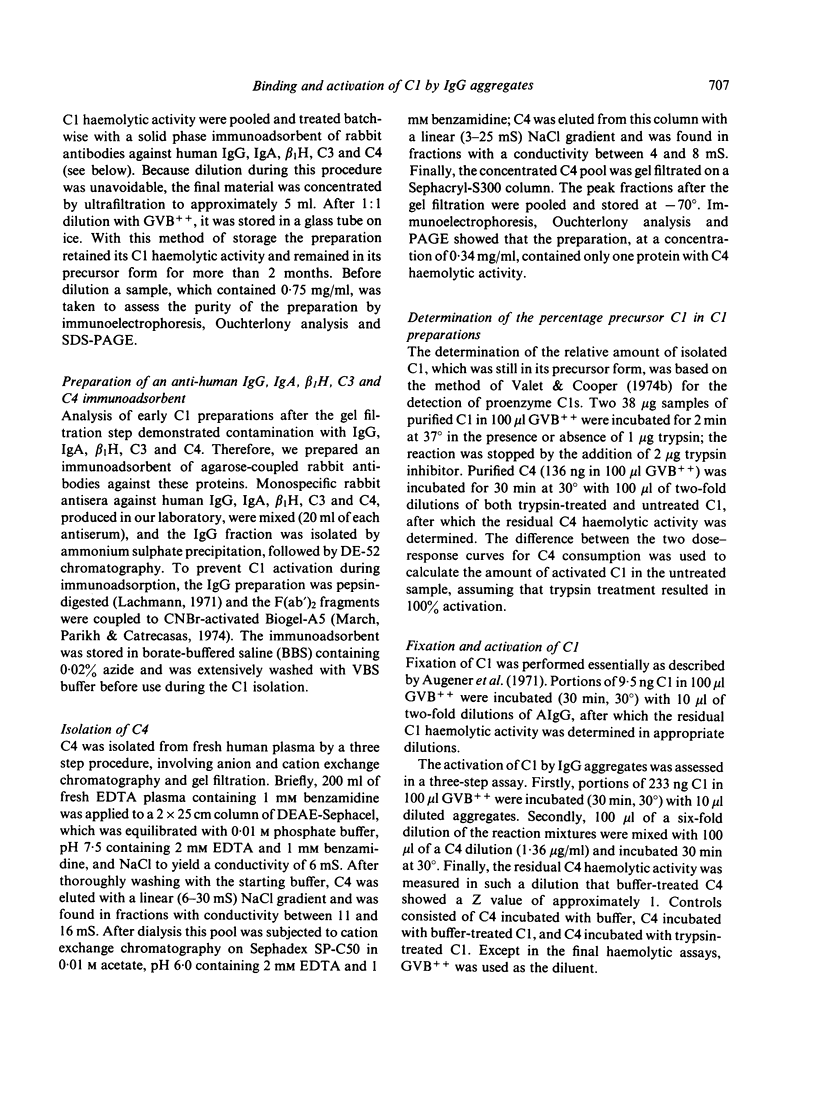
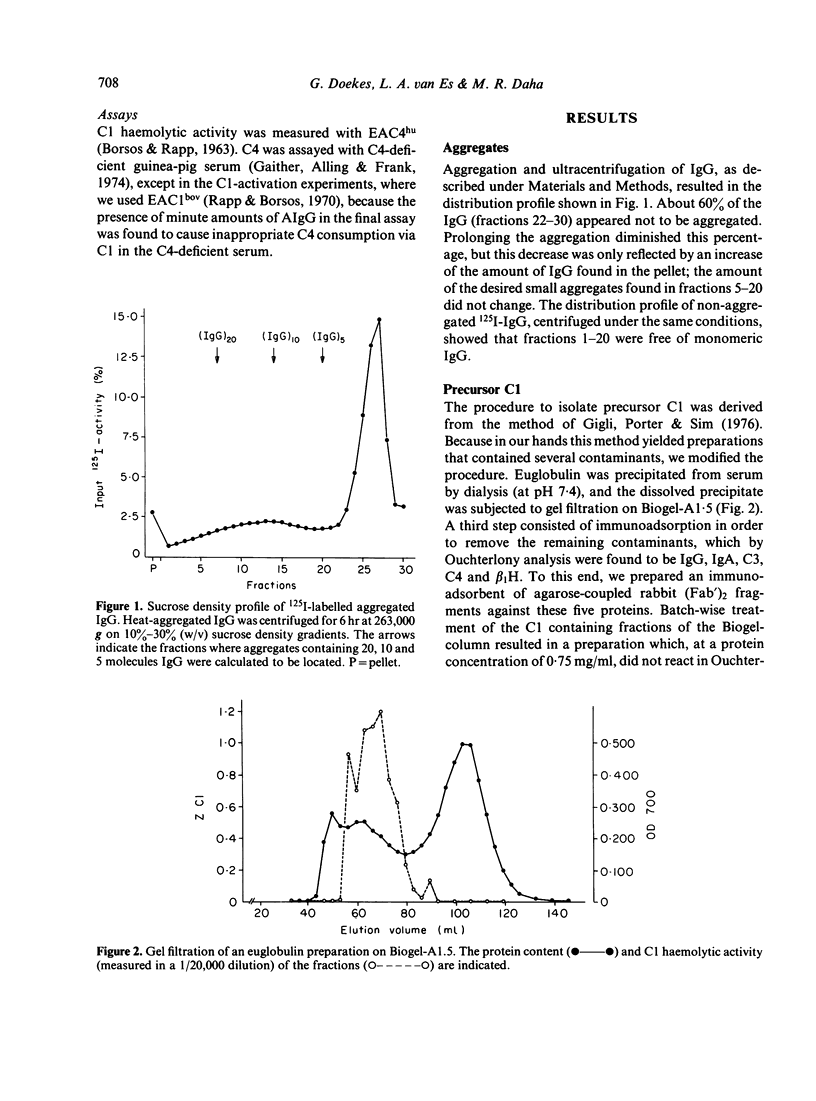
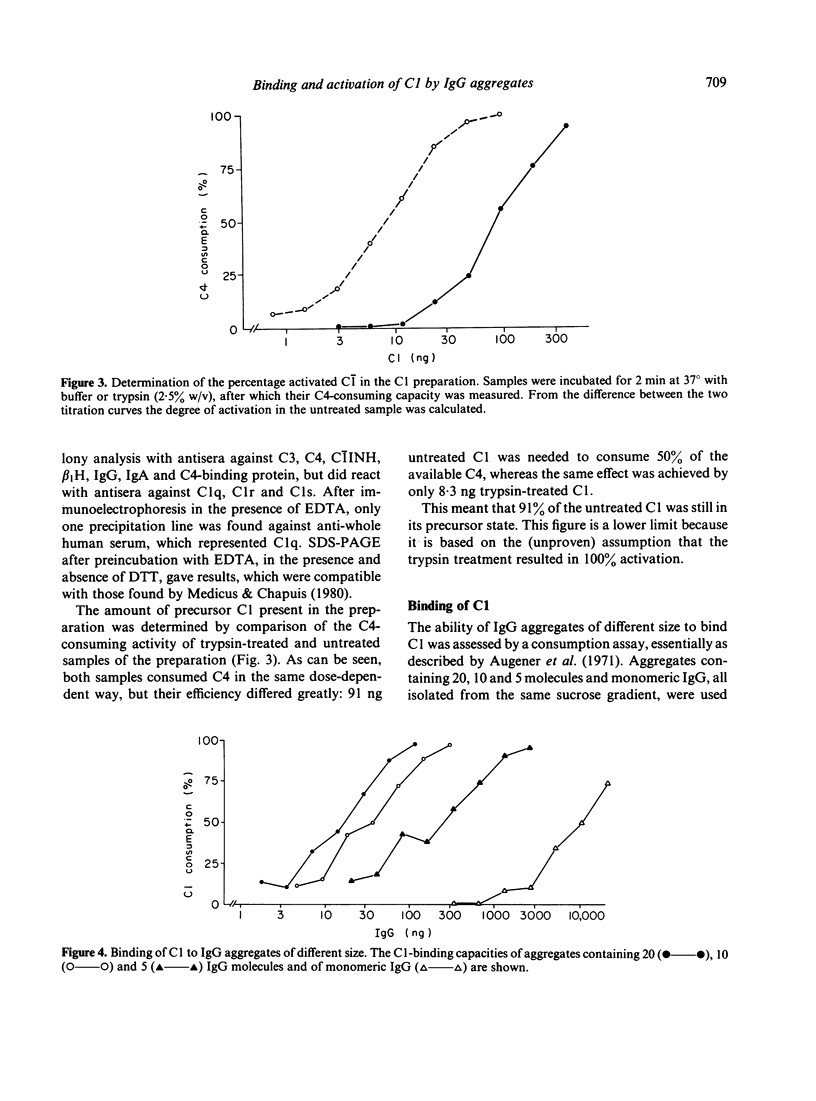
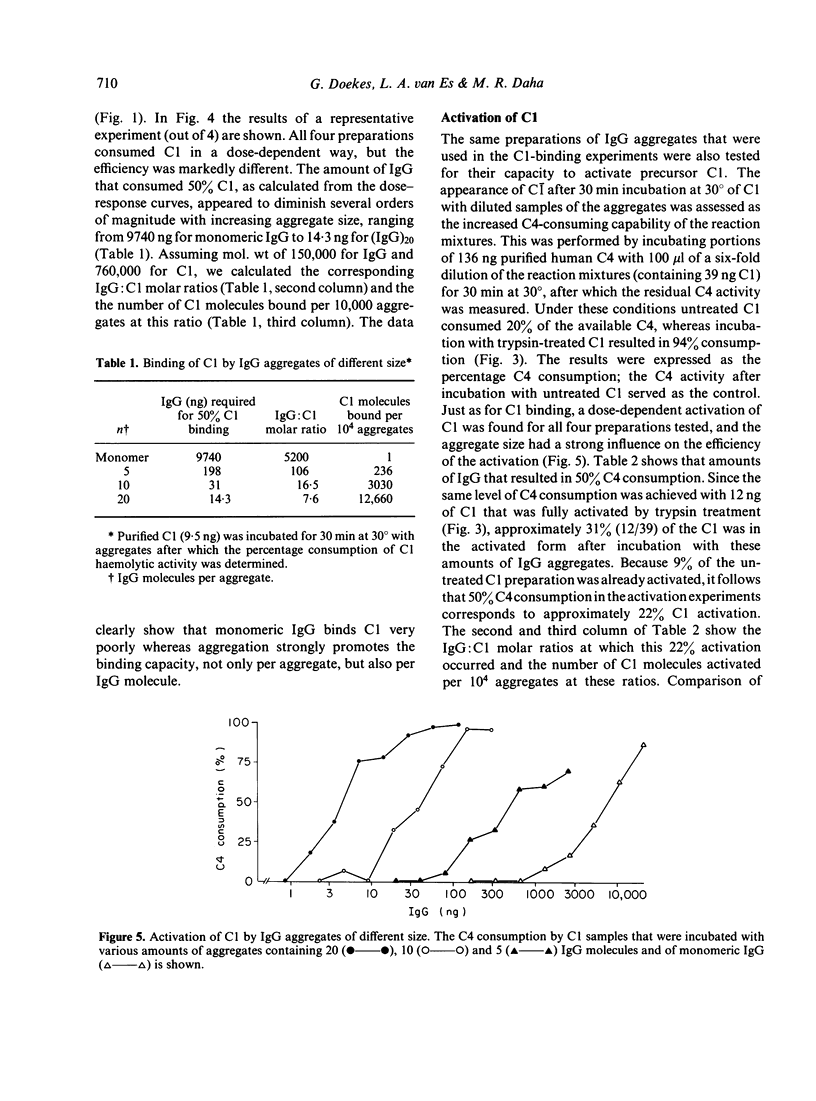
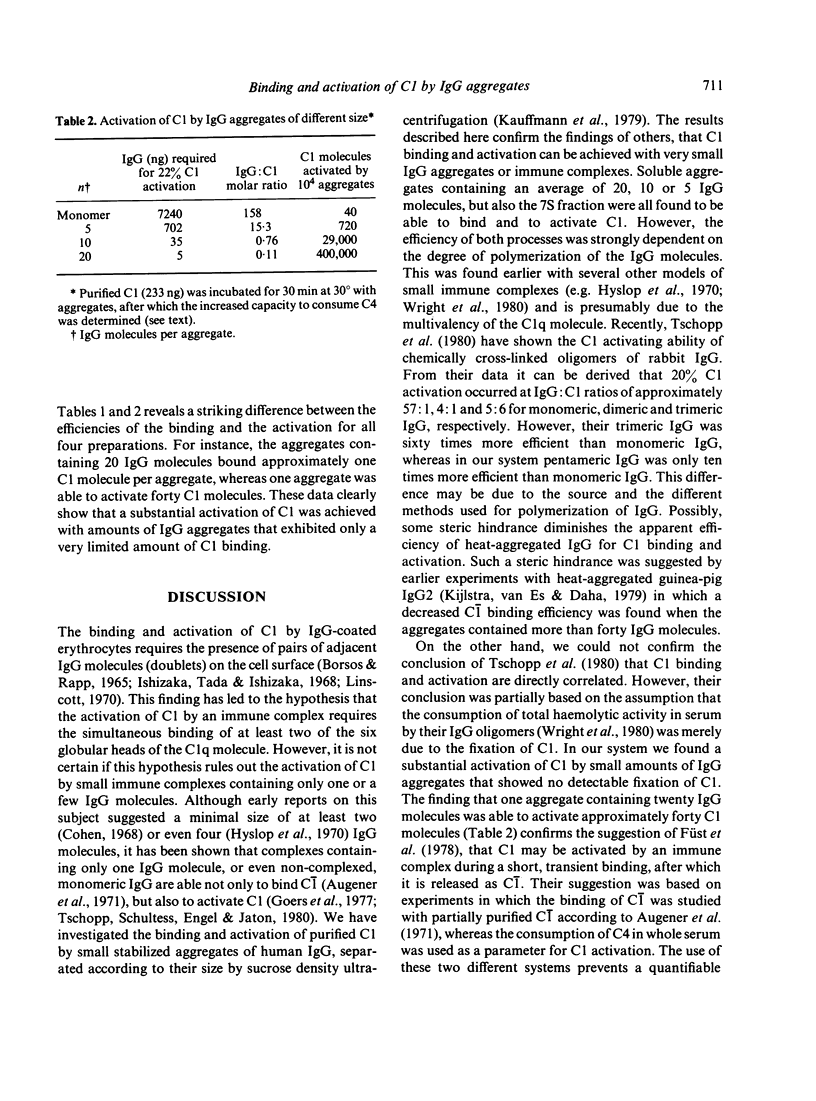
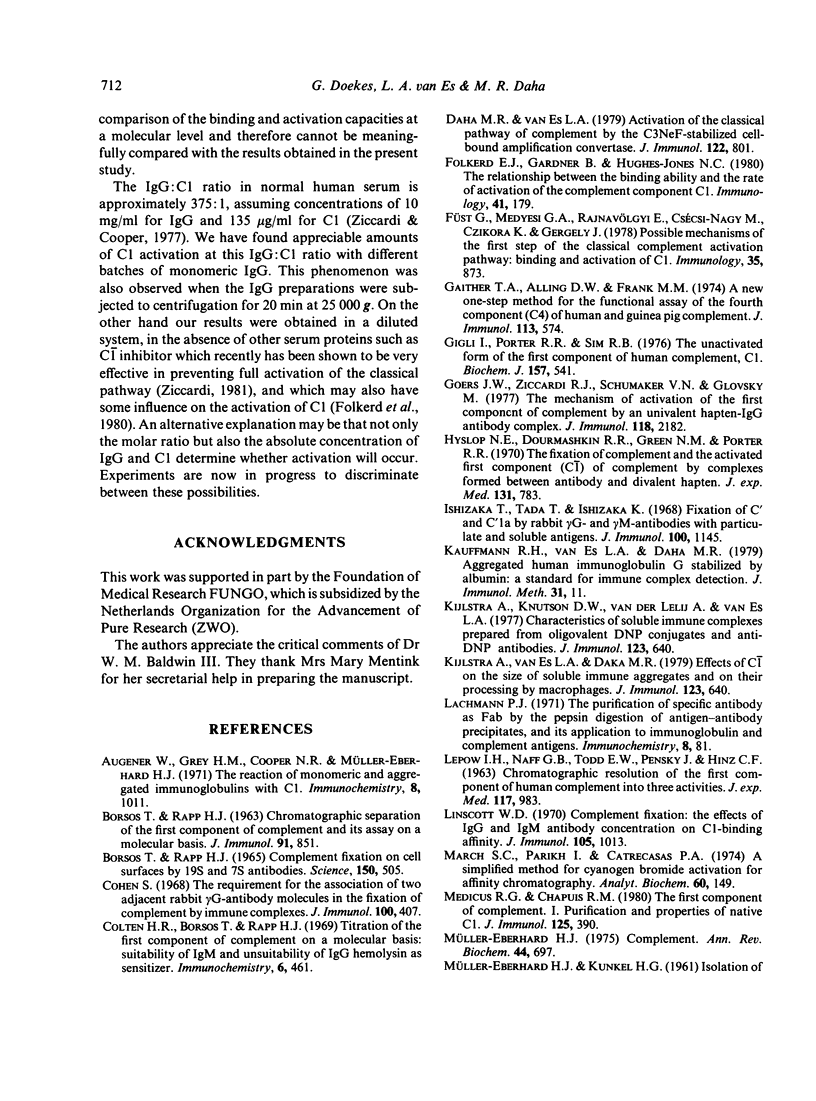
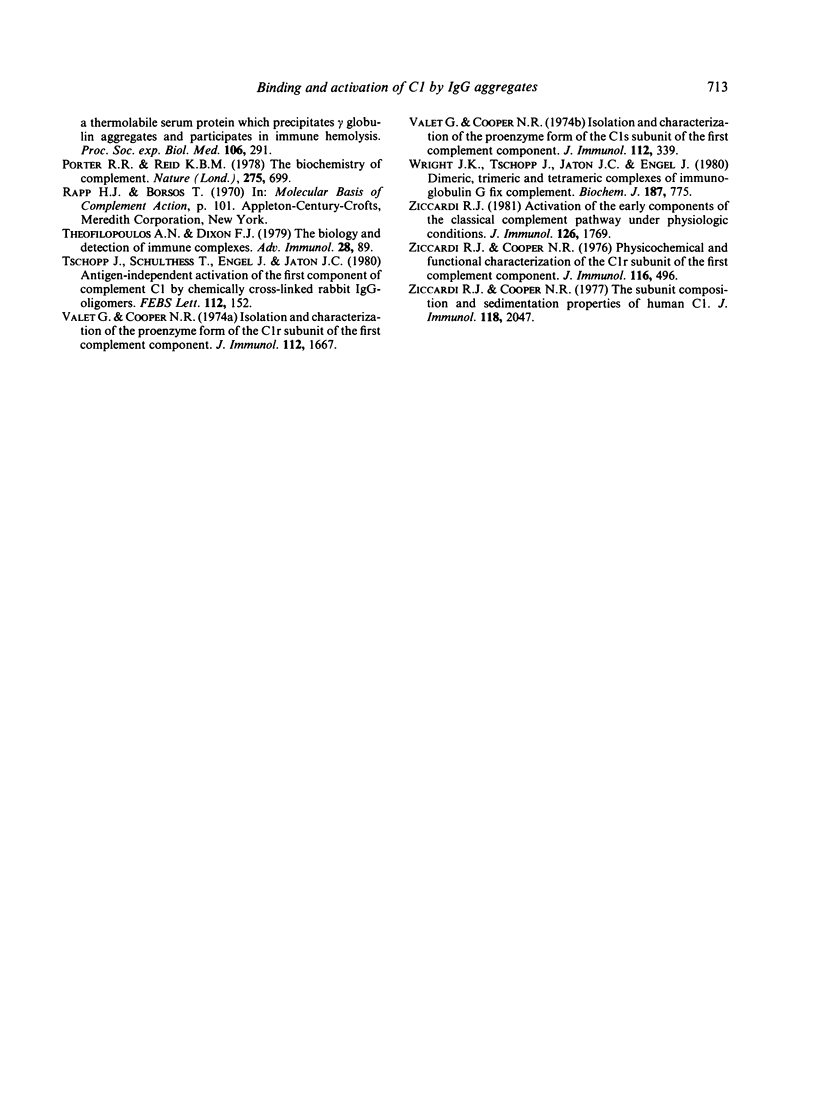
Selected References
These references are in PubMed. This may not be the complete list of references from this article.
- Augener W., Grey H. M., Cooper N. R., Müller-Eberhard H. J. The reaction of monomeric and aggregated immunoglobulins with C1. Immunochemistry. 1971 Nov;8(11):1011–1020. doi: 10.1016/0019-2791(71)90489-7. [DOI] [PubMed] [Google Scholar]
- BORSOS T., RAPP H. J. CHROMATOGRAPHIC SEPARATION OF THE FIRST COMPONENT OF COMPLEMENT AND ITS ASSAY ON A MOLECULAR BASIS. J Immunol. 1963 Dec;91:851–858. [PubMed] [Google Scholar]
- Borsos T., Rapp H. J. Complement fixation on cell surfaces by 19S and 7S antibodies. Science. 1965 Oct 22;150(3695):505–506. doi: 10.1126/science.150.3695.505. [DOI] [PubMed] [Google Scholar]
- Cohen S. The requirement for the association of two adjacent rabbit gamma-G-antibody molecules in the fixation of complement by immune complexes. J Immunol. 1968 Feb;100(2):407–413. [PubMed] [Google Scholar]
- Colten H. R., Borsos T., Rapp H. J. Titration of the first component of complement on a molecular basis: suitability of IgM and unsuitability of IgG hemolysins as sensitizer. Immunochemistry. 1969 May;6(3):461–467. doi: 10.1016/0019-2791(69)90302-4. [DOI] [PubMed] [Google Scholar]
- Daha M. R., van Es L. A. Activation of the classical pathway of complement by the C3NeF-stabilized cell-bound amplification convertase. J Immunol. 1979 Mar;122(3):801–805. [PubMed] [Google Scholar]
- Folkerd E. J., Gardner B., Hughes-Jones N. C. The relationship between the binding ability and the rate of activation of the complement component C1. Immunology. 1980 Sep;41(1):179–185. [PMC free article] [PubMed] [Google Scholar]
- Füst G., Medgyesi G. A., Rajnavölgyi E., Csécsi-Nagy M., Czikora K., Gergely J. Possible mechanisms of the first step of the classical complement activation pathway: binding and activation of C1. Immunology. 1978 Dec;35(6):873–884. [PMC free article] [PubMed] [Google Scholar]
- Gaither T. A., Alling D. W., Frank M. M. A new one-step method for the functional assay of the fourth component (C4) of human and guinea pig complement. J Immunol. 1974 Aug;113(2):574–583. [PubMed] [Google Scholar]
- Gigli I., Porter R. R., Sim R. B. The unactivated form of the first component of human complement, C1. Biochem J. 1976 Sep 1;157(3):541–548. doi: 10.1042/bj1570541. [DOI] [PMC free article] [PubMed] [Google Scholar]
- Goers J. W., Ziccardi R. J., Schumaker V. N., Glovsky M. M. The mechanism of activation of the first component of complement by a univalent hapten-IgG antibody complex. J Immunol. 1977 Jun;118(6):2182–2191. [PubMed] [Google Scholar]
- Hyslop N. E., Jr, Dourmashkin R. R., Green N. M., Porter R. R. The fixation of complement and the activated first component (C1) of complement by complexes formed between antibody and divalent hapten. J Exp Med. 1970 Apr 1;131(4):783–802. doi: 10.1084/jem.131.4.783. [DOI] [PMC free article] [PubMed] [Google Scholar]
- Ishizaka T., Tada T., Ishizaka K. Fixation of C' and C'la by rabbit gamma-G- and gamma-M-antibodies with particulate and soluble antigens. J Immunol. 1968 Jun;100(6):1145–1153. [PubMed] [Google Scholar]
- Kauffmann R. H., Van Es L. A., Daha M. R. Aggregated human immunoglobulin G stabilized by albumin: a standard for immune complex detection. J Immunol Methods. 1979;31(1-2):11–22. doi: 10.1016/0022-1759(79)90281-3. [DOI] [PubMed] [Google Scholar]
- Kijlstra A., van Es L. A., Daha M. R. Effects of C-1 on the size of soluble immune aggregates and on their processing by macrophages. J Immunol. 1979 Aug;123(2):640–645. [PubMed] [Google Scholar]
- Kijlstra A., van Es L. A., Daha M. R. Effects of C-1 on the size of soluble immune aggregates and on their processing by macrophages. J Immunol. 1979 Aug;123(2):640–645. [PubMed] [Google Scholar]
- LEPOW I. H., NAFF G. B., TODD E. W., PENSKY J., HINZ C. F. Chromatographic resolution of the first component of human complement into three activities. J Exp Med. 1963 Jun 1;117:983–1008. doi: 10.1084/jem.117.6.983. [DOI] [PMC free article] [PubMed] [Google Scholar]
- Linscott W. D. Complement fixation: the effects of IgG and IgM antibody concentration on C1-binding affinity. J Immunol. 1970 Oct;105(4):1013–1023. [PubMed] [Google Scholar]
- MULLER-EBERHARD H. J., KUNKEL H. G. Isolation of a thermolabile serum protein which precipitates gamma-globulin aggregates and participates in immune hemolysis. Proc Soc Exp Biol Med. 1961 Feb;106:291–295. doi: 10.3181/00379727-106-26313. [DOI] [PubMed] [Google Scholar]
- March S. C., Parikh I., Cuatrecasas P. A simplified method for cyanogen bromide activation of agarose for affinity chromatography. Anal Biochem. 1974 Jul;60(1):149–152. doi: 10.1016/0003-2697(74)90139-0. [DOI] [PubMed] [Google Scholar]
- Medicus R. G., Chapuis R. M. The first component of complement. I. Purification and properties of native C1. J Immunol. 1980 Jul;125(1):390–395. [PubMed] [Google Scholar]
- Müller-Eberhard H. J. Complement. Annu Rev Biochem. 1975;44:697–724. doi: 10.1146/annurev.bi.44.070175.003405. [DOI] [PubMed] [Google Scholar]
- Porter R. R., Reid K. B. The biochemistry of complement. Nature. 1978 Oct 26;275(5682):699–704. doi: 10.1038/275699a0. [DOI] [PubMed] [Google Scholar]
- Theofilopoulos A. N., Dixon F. J. The biology and detection of immune complexes. Adv Immunol. 1979;28:89–220. doi: 10.1016/s0065-2776(08)60800-7. [DOI] [PubMed] [Google Scholar]
- Tschopp J., Schulthess T., Engel J., Jaton J. C. Antigen-independent activation of the first component of complement C1 by chemically crosslinked rabbit IgG-oligomers. FEBS Lett. 1980 Apr 7;112(2):152–154. doi: 10.1016/0014-5793(80)80168-2. [DOI] [PubMed] [Google Scholar]
- Valet G., Cooper N. R. Isolation and characterization of the proenzyme form of the C1r subunit of the first complement component. J Immunol. 1974 May;112(5):1667–1673. [PubMed] [Google Scholar]
- Valet G., Cooper N. R. Isolation and characterization of the proenzyme form of the C1s subunit of the first complement component. J Immunol. 1974 Jan;112(1):339–350. [PubMed] [Google Scholar]
- Wright J. K., Tschopp J., Jaton J. C., Engel J. Dimeric, trimeric and tetrameric complexes of immunoglobulin G fix complement. Biochem J. 1980 Jun 1;187(3):775–780. doi: 10.1042/bj1870775. [DOI] [PMC free article] [PubMed] [Google Scholar]
- Ziccardi R. J. Activation of the early components of the classical complement pathway under physiologic conditions. J Immunol. 1981 May;126(5):1769–1773. [PubMed] [Google Scholar]
- Ziccardi R. J., Cooper N. R. Physicochemical and functional characterization of the C1r subunit of the first complement component. J Immunol. 1976 Feb;116(2):496–503. [PubMed] [Google Scholar]
- Ziccardi R. J., Cooper N. R. The subunit composition and sedimentation properties of human C1. J Immunol. 1977 Jun;118(6):2047–2052. [PubMed] [Google Scholar]


